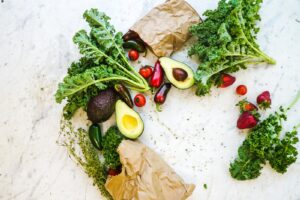In 2008 I finally figured out that the health problems I had been experiencing for over a year were due to food allergies and sensitivities. There were a number of foods that caused my symptoms, the primary ones being gluten grains (wheat, rye, barley), corn, soy, and milk. I began to feel much better during the summer after I eliminated these foods.
During the fall I began thinking about the Thanksgiving and Christmas holiday meals that would be coming up. I could not eat the traditional turkey dressing, green bean casserole, sweet potato casserole, or my mom’s pecan pie. Even the canned cranberry sauce was off-limits for me because it was made with corn syrup! As I thought about these meals, tears began to well up in my eyes.
One day my telephone rang and it was my sister-in-law Sharon. Christmas dinner was to be held at her house that year, and she was calling to find out more about which foods I could or could not eat. Sharon graciously planned a number of dishes that met my dietary requirements. She also asked me to bring dishes to share, ones that would be safe for me to eat and that others could enjoy as well. Over the past 12 years I have learned a number of things about navigating dietary challenges, and these may be helpful to Bella readers.
1. Plan in advance.
If you have specific dietary needs due to food allergies, diabetes, heart issues, or other conditions, think about the events you will attend that involve food. Call the event organizer in advance to learn what will be served and which foods could be problems for you.
2. Bring safe food to eat and share.
Call the host in advance and ask whether you might bring a dish to share with the other attendees. The host will almost always be happy about your offer, and you will have something to eat that is safe for you.
3. Try out new recipes.
You need to cook for yourself when you have special dietary needs. There are now specialty cookbooks and websites designed for almost any diet challenge imaginable. If you need a gluten-free turkey dressing recipe, type that into an internet search and dozens of choices will pop up. This can be a great time to try out new foods as well. Try brussels sprouts sautéed in maple syrup instead of a green bean casserole!
4. Ask your guests whether they have any special food requirements.
Food allergies and sensitivities have greatly increased in recent years, possibly due to the increased toxicity in our world. It is estimated that 32 million people (1 in 10) in the United States has at least one food allergy. When food sensitivities are also included, this number rises exponentially. If you have close friends or relatives with this issue who will be eating at your house, try to find a few recipes that suit their dietary needs. They will be very grateful that you did so.
Why not make one of these allergy-friendly recipes this holiday season?
Maple Syrup Brussels Sprouts
- 1 lb brussels sprouts, halved
- 1 tbsp extra virgin olive oil
- 4 garlic cloves, crushed and chopped
- 1/2 lemon, juiced
- 1/2 tsp black pepper
- 2 tsp salt
- 2 tbsp balsamic vinegar
- 2 tbsp coconut sugar or maple syrup
Steam brussels sprouts over boiling water until tender, about 10 to 15 minutes. Heat oil and garlic over medium-high heat until fragrant, being careful not to burn. Add brussels sprouts, lemon juice, pepper flakes, and salt, stirring until they begin to brown, about 5 minutes. Add balsamic vinegar and brown sugar, stir for a minute and remove from heat. Serve immediately.
Gluten-Free Quinoa Stuffing
- 1/4 tsp dried sage
- 1/4 tsp dried thyme
- 1 bay leaf
- 2 cups water
- 2 cups chicken stock
- 2 cups quinoa (rinsed and drained)
- 3 tbsp olive oil
- 1 cup diced celery
- 1 cup diced onion
- 1 cup chopped leeks
- 1 orange (zest and juice)
- 1 lemon (zest and juice)
- 1/2 cup dried cranberries
- 1 tbsp dried parsley
- 2 tsp dried thyme
- 1/2 tsp sea salt
- 1/4 tsp ground black pepper
Bring water and chicken stock to a boil; season with sage, thyme, bay, and salt. Add rinsed quinoa and return to a boil. Reduce heat, cover, and simmer 15 – 20 minutes until quinoa has absorbed water. Remove pot from heat and cool quinoa. Remove bay leaf.
Meanwhile, heat large skillet, then add 2 tablespoons olive oil. Sauté celery, onions, and leeks until soft and onion is transparent. Sprinkle with orange and lemon juice. Add quinoa to skillet. Stir in lemon and orange zest, cranberries, and herbs. Drizzle in 1 tablespoon olive oil. Season with salt and pepper. Transfer to serving dish and enjoy!
Adapted from Carla Hall of The Chew.






